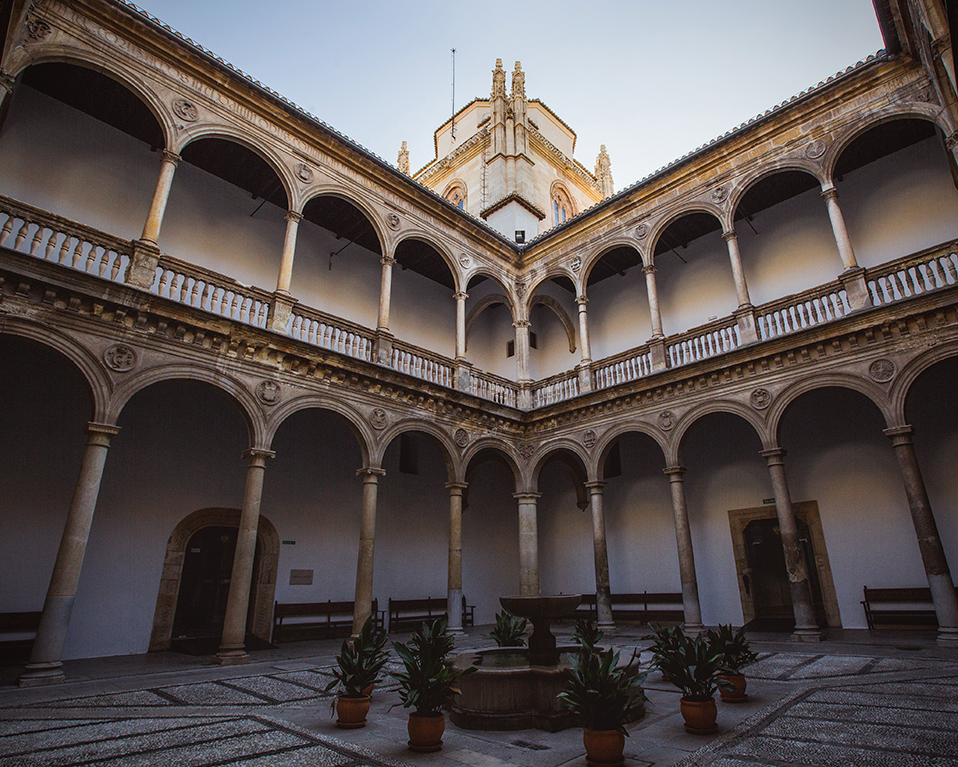Today, the University of Granada is a leading academic institution. This is not news! From its earliest days in the Middle Ages, it was a leading Arabic University where mathematics, medicine and logic were studied.
The University of Granada is ranked in the top 300 universities in the world. We take a look at the university’s history.
1349-1492: The Madrasah
The University of Granada dates back as far as the Middle Ages with the founding of the Madrasah Yusufiyya in 1349 by Yusuf I, the Sultan of Granada. The Madrasah Yusufiyya was a type of Arabic University. Subjects such as medicine, calculus, astronomy, geometry, and logic were taught.
With the surrender of Granada in 1492, and its subsequent annexation into the Kingdom of Castile, the Madrasah, seen as a powerful symbol of the Nasrid Dynasty, was destroyed. Along with the Madrasah itself, most of the ancient manuscripts and texts contained in its library were burnt in a bonfire. Ordered by Cardinal Cisneros, and held in Bib-Rambla square in the centre of Granada, it was a sad precursor to many subsequent book-burnings.
1492-1531: San Cecilio and Assimilation
An ecclesiastical college called San Cecilio replaced the Madrash. Its founding was to facilitate the religious and political integration of Granada’s predominantly Muslim and Jewish communities into Catholicism.
1526-1531: The Arrival of the Emperor Charles V

The arrival of Emperor Charles V to Granada in 1526 marks a significant point in the history of the University of Granada. Charles became alarmed by the fact that the city had, in practical terms, been deprived of its main educational centre and libraries.
Consequently, he founded the Colegio Imperial de San Miguel and the Colegio Real de Santa Cruz de la Fe. It became home to twelve students and a rector. Additionally, another building was also constructed to accommodate one hundred Moorish students, a measure designed to speed up the assimilation process of the Moors.
The University of Granada was officially founded in 1531 by means of a Papal Bull issued by Pope Clement VII. It was thereby granted the same privileges, faculties and legal status as the universities of Bologna, Paris, Salamanca, and Alcalá.
1500s-1600s: The Golden Age
During the 1500s and early 1600s the University of Granada thrived. There was the construction of numerous university buildings throughout the city and the introduction of knowledge areas such as the arts and humanities. The University became one of the most important learning centres in Europe, attracting scholars from countries around the globe.
1600s-1800s
The demise of the Spanish Golden Age also brought about the demise of the University of Granada. For almost two centuries, from the beginning of the Enlightenment towards the end of the 1600s, until the early 1800s, the splendour and prestige previously enjoyed by the University of Granada dwindled.
Related article: Best universities in Spain for international students
1857-1970s: Revival, the Empirical Sciences, and State Intervention
However, the University restored its previous institutional model, which allowed it to regain prestige. During this period the first botanic garden (still present) was established for medicinal purposes at the University. During this time, the study and teaching of scientific disciplines such as chemistry, physics, and medicine took off at the university.
The Moyano Law of 1857 led to a general reform of academics in Spanish universities. What followed was increased state intervention in university affairs. These centralised state policies affected the University of Granada right up until the demise of Franco’s dictatorship in the late 1970s.
1970s-1990s: Decentralisation and Mass Enrolments
During the final decades of the 20th century the University of Granada underwent some important changes. Following the decentralisation of university education, the Junta de Andalucía (governed and funded the University of Granada.
The policy of opening up higher level education to all, allowed the University to expand significantly. Gone were the elitism and exclusivity which had previously characterised the University.
Related article: Discover the white villages of Granada
The University of Granada today
Three University of Granada subjects feature among the global top 50. Plus, a staggering 35 subjects in total featuring in the Academic Ranking of World Universities (ARWU).
The University contributes to regional, national and international socio-economic development. The university has created over 82 spin-offs and set up over 580 active research projects. Also, it patented over 230 products in recent years.


